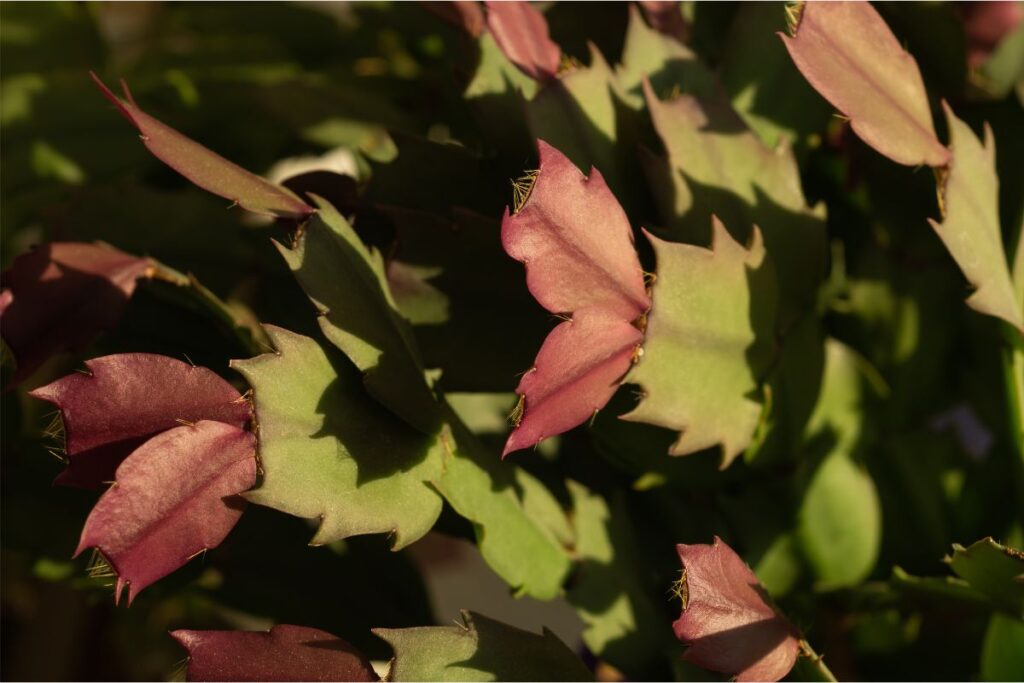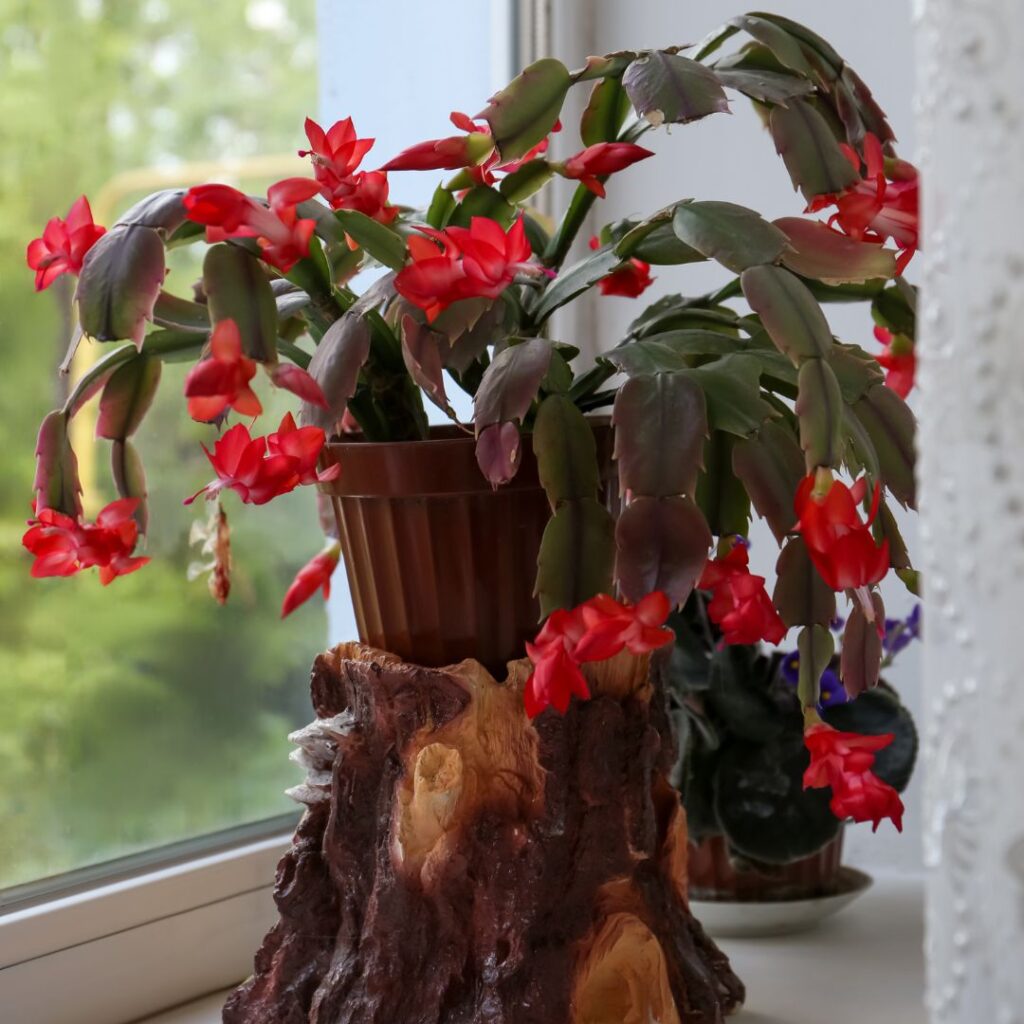Your Christmas Cactus Is Turning Red: Should You Worry?
Oh no, your beloved Christmas cactus is looking a little less festive these days! Instead of rocking that lush green look, its leaves are turning a rather alarming shade of red. But before you start panicking, take a deep breath and relax. In most cases, this colorful change is nothing to freak out about – it’s just your plant’s way of telling you something’s not quite right. So let’s dive in and find out what’s causing your cactus to see red!

Contents
Why Is My Christmas Cactus Turning Red?
1. Too Much Sunbathing
Who doesn’t love a little vitamin D? But for your Christmas cactus, too much direct sunlight can be a real buzzkill. Overexposure to those bright rays can cause the leaves to turn a reddish or purplish hue as a way to protect itself from the harsh light. Think of it as your cactus’ way of putting on a little sunscreen!
2. Thirsty Plant
Just like us, plants need their daily dose of H2O to stay happy and healthy. If your Christmas cactus isn’t getting enough water, its leaves might start turning red as a cry for help. You’ll also notice them looking a bit wilted and dry – a telltale sign that it’s time to break out the watering can.
3. Temperature Tantrums

Christmas cacti can be a little fussy when it comes to temperature. If it’s too hot or too cold, your plant might throw a bit of a tantrum by turning its leaves red. The ideal temperature range for these guys is between 60-70°F (15-21°C), so try to keep them away from any drafty areas or hot spots.
4. Root Rot and Infections
Uh-oh, your cactus might have a case of the dreaded root rot! Overwatering, poor drainage, and fungal infections can all lead to unhappy roots, which in turn causes the leaves to turn red and start dying off. If you suspect this is the case, it’s time to take action and treat the infection before it gets worse.
5. Nutrient Deficiency
Just like us humans, plants need a well-balanced diet to stay in top shape. If your Christmas cactus is lacking in certain nutrients, it might start showing signs of distress – like reddish leaves. Make sure you’re using the right fertilizer and keeping an eye on the soil’s pH levels to ensure your plant is getting all the nutrients it needs.
6. New Growth Spurts

Believe it or not, sometimes red leaves on a Christmas cactus are actually a good sign! As the plant starts producing new segments and getting ready to bloom, the leaves might take on a reddish hue. It’s like your cactus is putting on its best blushing look for the upcoming flowering season.
So there you have it, folks – the main reasons why your Christmas cactus might be seeing red. But don’t worry, with a few simple tweaks to its care routine, you can help bring back that vibrant green color in no time!
Reviving Your Red Christmas Cactus
Okay, so your Christmas cactus is looking a little worse for wear with those red leaves. But fear not, there are ways to bring your plant back to its former glory! Here’s a quick guide on how to revive a red Christmas cactus:
- Check the Growing Conditions
First things first, take a good look at your cactus’ living situation. Is it getting enough bright, indirect light? Is the temperature in a comfortable range? Make any necessary adjustments to get those growing conditions just right. - Water Wisely
Overwatering or underwatering can both spell disaster for your Christmas cactus. During the growing season, water it thoroughly when the top inch of soil is dry, but never let it sit in standing water. And during dormancy, cut back on the watering a bit to let the soil dry out slightly between drinks. - Boost the Humidity
These guys love a little extra moisture in the air, so consider placing a tray of water near your cactus or using a humidifier to increase the humidity around it. - Check for Pests
Tiny critters like mealybugs or spider mites can wreak havoc on your plant’s health. Give your cactus a good once-over and treat any pest infestations with an insecticidal soap or mild soap and water solution. - Fertilize Sparingly
A little boost of nutrients during the growing season can help your Christmas cactus bounce back. Use a balanced, water-soluble fertilizer diluted to half-strength once a month, but skip the fertilizer during dormancy. - Prune with Care
If you notice any dead, damaged, or shriveled segments, go ahead and prune them off with clean pruning shears. Just be careful not to remove too much foliage at once, as that can stress out your plant even more. - Be Patient
Rome wasn’t built in a day, and your Christmas cactus won’t recover overnight either. Give it some time and keep up with the proper care, and you’ll start to see those gorgeous green leaves making a comeback.
With a little TLC and some patience, you can help your Christmas cactus bounce back from its red leaf phase and return to its vibrant, healthy self. Trust us; your efforts will be worth it when you see those beautiful blooms popping up again!
